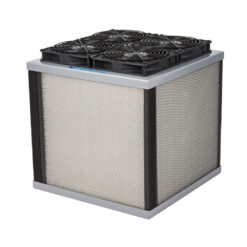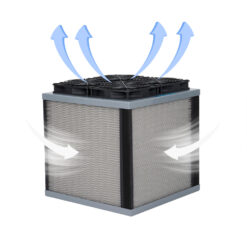While CADR (Clean Air Delivery Rate) is an important metric to consider when purchasing a room air purifier, there’s another metric that needs to be taken into consideration as well – Air Changes per Hour (ACH).
Air Changes per Hour is a metric that tells you how many times the air is exchanged in a room through ventilation. The metric could also be used to calculate roughly how many times the air is cleaned in a room by air cleaning devices such as room air purifiers, Far-UV, and Upper UV.
Why is ACH important?
A room air purifier’s CADR indicates how powerful it is, but it doesn’t tell us whether it’s sufficient for the room you’re using it at.
A good analogy we like to use is an aquarium or fish tank. Did you know that the water in an aquarium should be changed (filtered) 4 to 10 times an hour? You need an appropriately sized motor and filter to meet that requirement. Using an under-powered motor for a large aquarium could lead to increased water pollution, making the fish sick or even die.
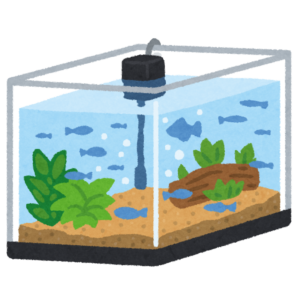
In 2022, a study published in Italy found that classrooms with 6 ACH of ventilation helped reduce the transmission of COVID-19 among students by 82.5%, as compared to 40% at 2.4 ACH. This study showed that having a high ACH could help substantially reduce the spread of airborne diseases like COVID-19, because aerosols carrying the virus are removed at a faster rate at a higher ACH.
The American CDC and NIOSH also published a study comparing how long it took to remove 99% of airborne virus particles in a room. At 2 ACH, it took 138 minutes, at 6 ACH, it took 46 minutes, and at 15 ACH, it took 18 minutes.
That is why it is important to find out how much ACH an air purifier delivers in a room, otherwise you may end up buying something that is under-powered and ineffective.
How many air changes do I need?
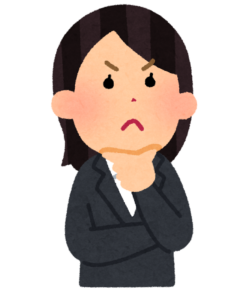
In Singapore, the NEA (National Environment Agency) recommends 5 to 7 ACH.
This aligns with dokuki’s recommendation of having at least 6 ACH in every room. At 6 air changes per hour, the room will have roughly all of its air cleaned every 10 minutes. The higher the ACH, the cleaner the air you breathe as it takes a much shorter time to clean the air.
Pollutants in the air can enter the room at anytime, such as from the outside environment (dust, smoke, etc) or other people (virus, bacteria), so it’s important to have a high ACH to have the air cleaned as frequently as possible. The higher, the better.
A less than ideal ACH would result in air pollutants not getting cleaned fast enough, which could cause allergic reactions in those suffering from allergies or the spread of contagious airborne diseases from sick people.
Our recommendation applies to homes and offices. For other premises such as schools, restaurants, clinics, and hospitals, we recommend following the standards set in ASHRAE 241.
How to calculate ACH?
ACH can be calculated by using the formula below. Alternatively, you can use our handy Air Changes Calculator, which can help you calculate quickly and easily.
Clean Air Delivery Rate (m³/h) / ( Room Area (m²) x Room Height (m) ) = Air Changes per Hour
TIP: The floor-to-ceiling height in most HDB flats and condominium units is 2.6 m.
Looking for a good air purifier? We got you covered
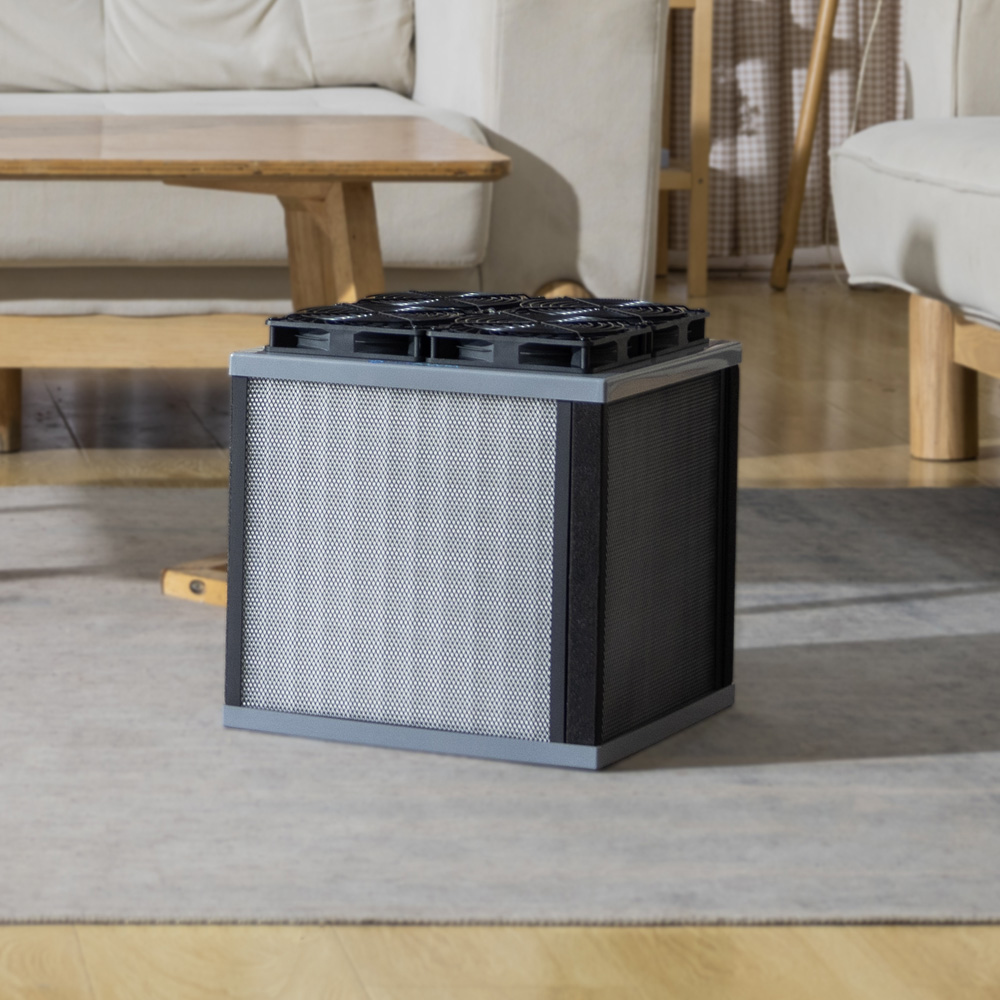
At dokuki, we strive to offer highly innovative products that substantially help to improve our customers’ quality of life without breaking the bank.
If you’re looking for a good room air purifier, we highly recommend the AirFanta 3Pro because it can easily help you hit 6 ACH in all of your rooms at one third the price of other air purifiers.
In a 40 m² studio apartment, the AirFanta 3Pro (at its highest setting) cleans the air every 9 minutes (6.75 ACH). In a 15 m² bedroom, it cleans the air every 3.3 minutes (18 ACH), more frequent than most modern hospital facilities in the developed world.
Find out why the AirFanta 3Pro is so powerful or order yours now:
Room Air Purifier


